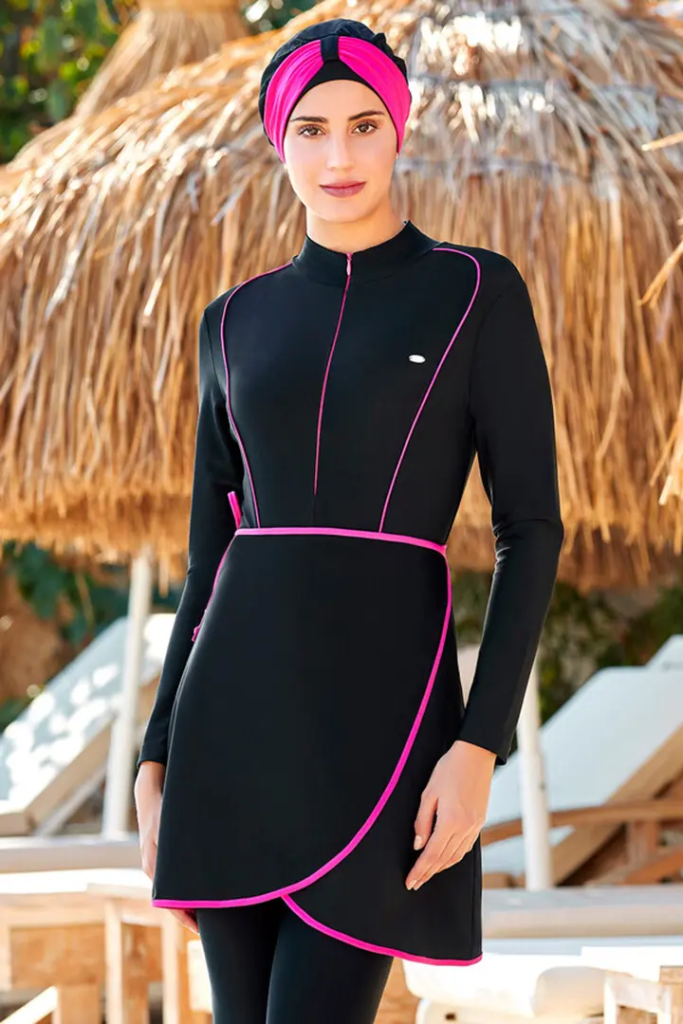
The burkini is a type of swimwear designed for Muslim women, which covers the whole body, except for the face, hands, and feet. The garment has been the subject of controversy in recent years, with some arguing that it is a symbol of oppression. And others arguing that it is a symbol of empowerment. In this essay, I will argue that the burkini is a symbol of Muslim women’s empowerment.
First, it is important to understand the historical context of the burkini. The burkini was invented in 2004 by an Australian-Lebanese woman named Aheda Zanetti. Zanetti was inspired to create the garment after her niece was disqualified from a swimming competition for wearing a hijab. Zanetti recognized that there was a need for a swimsuit that covered the whole body. But was also comfortable and practical for swimming. The burkini was designed to solve this problem.
Since its inception, the burkini has become a popular choice for Muslim women who want to swim or participate in water sports. The garment has been endorsed by several Muslim organizations, including the Islamic Society of North America and the Council on American-Islamic Relations. These organizations argue that the burkini allows Muslim women to participate in activities that they would otherwise be excluded from, without compromising their religious beliefs.
Opponents of the burkini argue that it is a symbol of oppression, because it is often worn by women who are forced to cover themselves by their husbands or families. They argue that the burkini reinforces patriarchal values and denies women the right to express themselves freely. However, this argument ignores the fact that many women choose to wear the burkini as a form of self-expression. For these women, the burkini is a way to assert their identity and their religious beliefs. And to challenge the dominant narrative about what Muslim women should wear.
Furthermore, the burkini is not just a garment, but a symbol of a larger movement for Muslim women’s empowerment. Muslim women around the world are challenging patriarchal norms and fighting for their rights. They are demanding the right to education, the right to work, and the right to participate in public life. The burkini is a symbol of this larger struggle. It represents Muslim women’s refusal to be defined by others, and their determination to assert their own identities.
Finally, the burkini is a symbol of cultural diversity and religious freedom. In a world that is becoming increasingly homogenous, the burkini represents the diversity of Muslim cultures. And the right of individuals to express their religious beliefs. It represents the idea that there is no one way to be Muslim, and that Muslim women should be free to express themselves as they see fit.
In conclusion, the burkini is a symbol of Muslim women’s empowerment. It allows women to participate in activities that they would otherwise be excluded from, without compromising their religious beliefs. It is a symbol of a larger movement for Muslim women’s rights, and represents their refusal to be defined by others. The burkini is a practical and comfortable garment that allows women to be physically active without compromising their modesty. Finally, the burkini is a symbol of cultural diversity and religious freedom. It represents the diversity of Muslim cultures and the right of individuals to express their religious beliefs.

